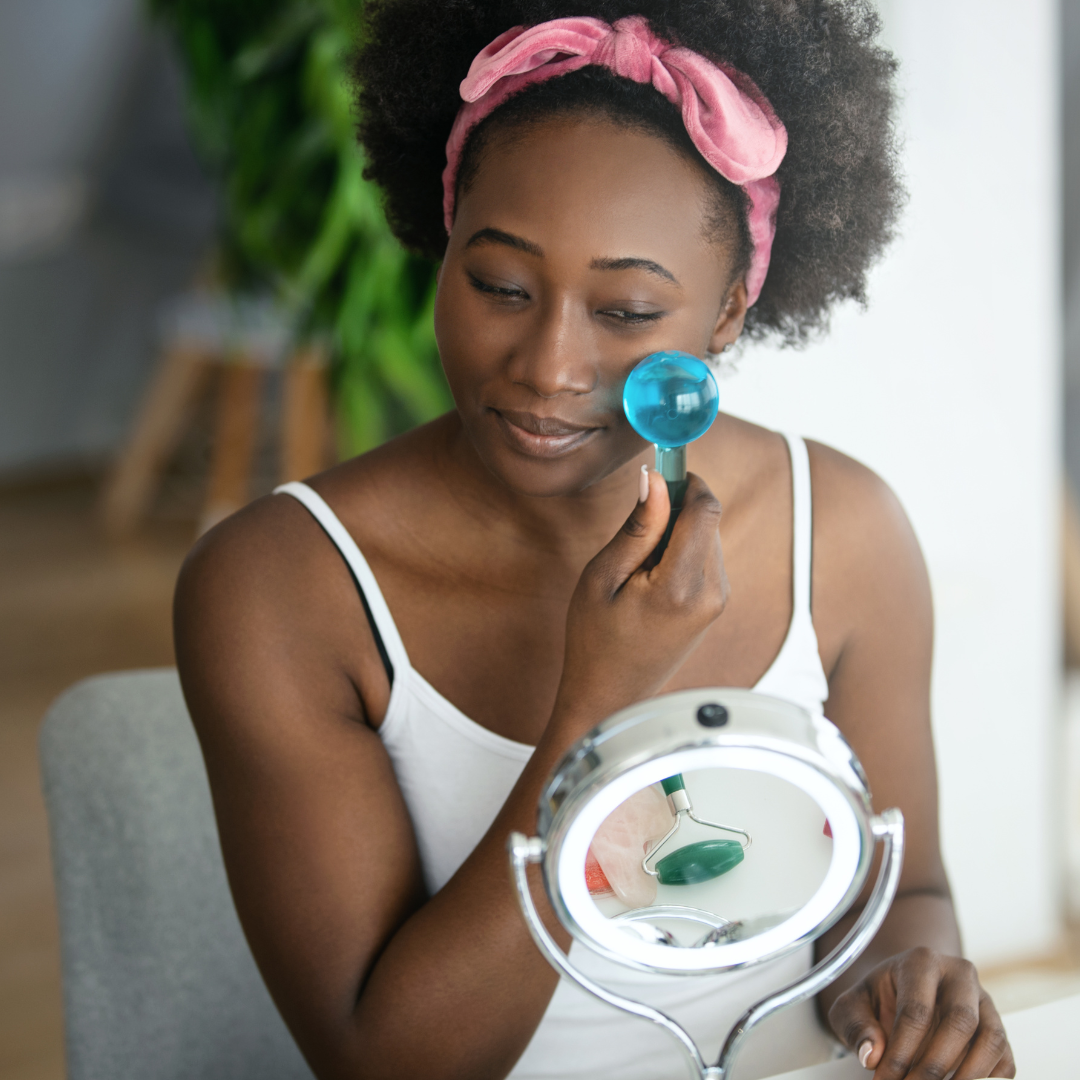
Let's be honest: the idea of dipping your face into ice cold water or smoothing a metal roller over your skin in winter time isn't exactly appealing. But skin icing is a cryotherapy technique people have been using for some time now across the globe, and in recent years, celebrities and TikTok users are opting for it to prep for a big event or party season (and of course, to keep cool during summertime).
But what exactly is this trend and is it beneficial for skin, or even truly safe? We spoke to an expert for the full rundown, and analysed skin icing in full...
What is skin icing?
Skin icing is (unsurprisingly) the act of applying ice to the skin for its prospective benefits. As well as applying ice to the skin directly, other iterations of the 'trend' include dipping your face in icy water, getting a cryotherapy facial, or using tools such as ice rollers or globes that have been in the fridge or freezer.
Perhaps best known for including some form of skin icing within her own routine is Bella Hadid, who begins most mornings by submerging her face into icy cold water. In fact, makeup artist Isamaya Ffrench once shared a video of Bella in the thick of her chilly treatment. Others who have been said to try and love it include Kate Moss, Jennifer Aniston and Irina Shayk.
What are the benefits if skin icing?
Benefits are said to include the reduction of inflammation, redness and pore size, as well as soothing of blemishes. "We know that cold temperatures constrict blood vessels – so when the skin is exposed to ice, blood flow is temporarily reduced. This can actually help to reduce puffiness and we also know ice can help reduce inflammation/pain or swelling associated with a blemish," confirms Dr Sonakshi Khorana, cosmetic doctor and dermatology expert.
However, Dr Khorana notes, it's important to remember that a lot of the promised benefits related to skin icing are often "anecdotal."
"Results will be variable and temporary," she explains, before adding: "There is also no scientific evidence that skin icing leads to a reduction in oil production or increased product penetration."
If you do want to give it a go, make sure you do so safely...
Are there any risks relating to skin icing?
Trying this trend in the wrong way can actually cause more damage than good as there are a number of potential risks.
If done wrong or for too long/too often, "you can experience redness or irritation," says Dr Khorana. This can also apply if you are particularly sensitive, skin type-wise, or if you have rosacea, in which case you could experience a flare-up and damage your skin barrier.
Ice burns are also a very real possibility. "Applying ice directly to the skin without proper insulation can lead to cold burns," explains the doctor.
If you do try skin icing, be sure to compensate with hydrating ingredients and rich creams as "extreme temperatures and changes in temperature in a short space of time can actually impair the barrier function of the skin, leading to increased dryness and sensitivity."
How to try skin icing
All that said, if you do it right and are careful, you can reap the rewards of skin icing, particularly before a big party or event you want to look radiant for.
If going down the traditional route, add the contents of an ice cube tray into a large bowl then top with water. Be sure to only dip skin into icy water for a short amount of time - between 10 and 15 seconds maximum.
You can also apply ice directly to the complexion, but if you're doing this Dr Khorana advises "always wrapping it in a cloth or plastic wrap."
And finally there are a plethora of skin icing tools on the market now, which allow you to experience a touch of cryotherapy at home.
Skin icing tools
Ice rollers or cryotherapy globe/wand are a really easy way to try out this cooling technique. These offer the anti-inflammatory, cooling benefits of skin icing but in a more controlled way. You can either pop them in for the directed time or leave them in there, but don't apply them straight after removing from the freezer. Allow the tools to thaw slightly before applying to the skin.







